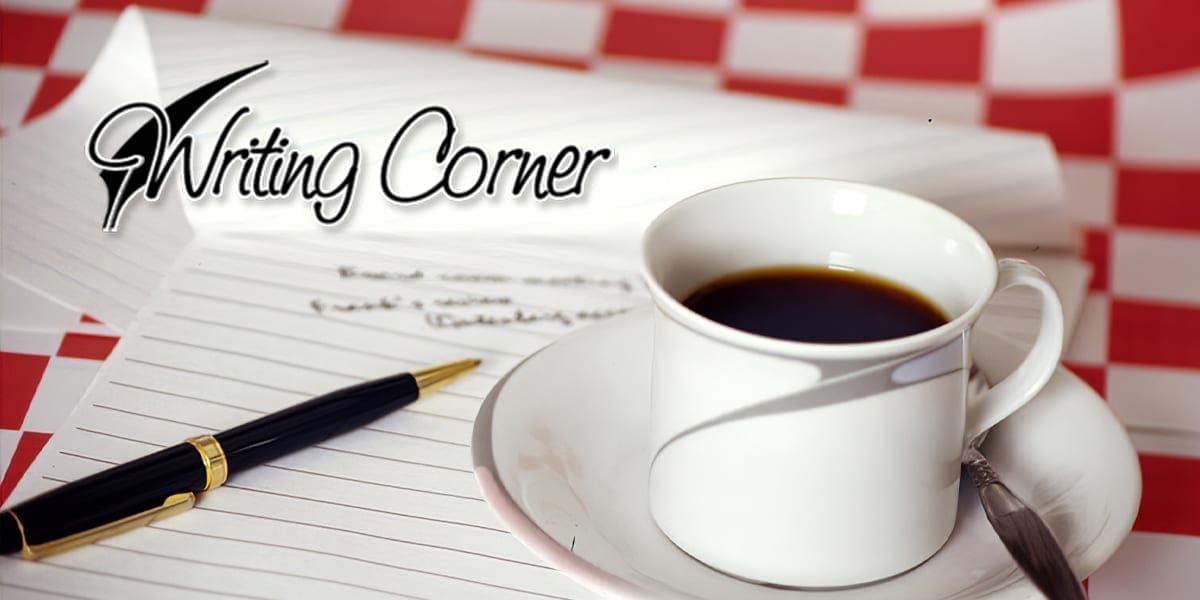NON-FICTION - For writers of all genre, and the readers who love them. Find what you want to know.
Non-Fiction Writing
Do you love telling the true stories of the people around you? Are you looking for a way to sell your articles or non-fiction books? This section is designed to give you the information you need, along with some tried and true tips for both breaking into the market and expanding your reach once you do.
Now you can search this section by author, topic, or category.
Non-fiction (or nonfiction) is content (sometimes, in the form of a story) whose creator, in good faith, assumes responsibility for the truth or accuracy of the events, people, or information presented. In contrast, a story whose creator explicitly leaves open if and how the work refers to reality is usually classified as fiction. Nonfiction, which may be presented either objectively or subjectively, is traditionally one of the two main divisions of narratives (and, specifically, prose writing). the other traditional division being fiction, which contrasts with nonfiction by dealing in information, events, and characters expected to be partly or largely imaginary.
Non-fiction’s specific factual assertions and descriptions may or may not be accurate, and can give either a true or a false account of the subject in question. However, authors of such accounts genuinely believe or claim them to be truthful at the time of their composition or, at least, pose them to a convinced audience as historically or empirically factual. Reporting the beliefs of others in a nonfiction format is not necessarily an endorsement of the ultimate veracity of those beliefs, it is simply saying it is true that people believe them (for such topics as mythology). Nonfiction can also be written about fiction, typically known as literary criticism, giving information and analysis on these other works. Nonfiction need not necessarily be written text, since pictures and film can also purport to present a factual account of a subject.
Distinctions
The numerous literary and creative devices used within fiction are generally thought inappropriate for use in nonfiction. They are still present particularly in older works but they are often muted so as not to overshadow the information within the work. Simplicity, clarity and directness are some of the most important considerations when producing nonfiction. Audience is important in any artistic or descriptive endeavor, but it is perhaps most important in nonfiction. In fiction, the writer believes that readers will make an effort to follow and interpret an indirectly or abstractly presented progression of theme, whereas the production of nonfiction has more to do with the direct provision of information. Understanding of the potential readers’ use for the work and their existing knowledge of a subject are both fundamental for effective nonfiction. Despite the truth of nonfiction, it is often necessary to persuade the reader to agree with the ideas and so a balanced, coherent and informed argument is vital. However, the boundaries between fiction and nonfiction are continually blurred and argued upon, especially in the field of biography;[4] as Virginia Woolf said: “if we think of truth as something of granite-like solidity and of personality as something of rainbow-like intangibility and reflect that the aim of biography is to weld these two into one seamless whole, we shall admit that the problem is a stiff one and that we need not wonder if biographers, for the most part failed to solve it.”
Semi-fiction is fiction implementing a great deal of nonfiction, e.g. a fictional description based on a true story.
Major types
Common literary examples of nonfiction include expository, argumentative, functional, and opinion pieces; essays on art or literature; biographies; memoirs; journalism; and historical, scientific, technical, or economic writings (including electronic ones).
Journals, photographs, textbooks, travel books, blueprints, and diagrams are also often considered non-fictional.[citation needed] Including information that the author knows to be untrue within any of these works is usually regarded as dishonest. Other works can legitimately be either fiction or nonfiction, such as journals of self-expression, letters, magazine articles, and other expressions of imagination. Though they are mostly either one or the other, it is possible for there to be a blend of both. Some fiction may include nonfictional elements. Some nonfiction may include elements of unverified supposition, deduction, or imagination for the purpose of smoothing out a narrative, but the inclusion of open falsehoods would discredit it as a work of nonfiction. The publishing and bookselling business sometimes uses the phrase “literary nonfiction” to distinguish works with a more literary or intellectual bent, as opposed to the greater collection of nonfiction subjects.
Specific Types
Academic paper
Academic publishing
Almanac
Autobiography
Biography
Blueprint
Book report
Creative nonfiction
Design document
Diagram
Diary
Dictionary
Factual television (e.g. television documentaries)
Encyclopedia
Essay
Guides and manuals
Handbook
History
Journal
Journalism
Letter
Letter collection
Literary criticism
Memoir
Natural history
Nonfiction films (e.g. documentaries)
Philosophy
Photograph
Popular science
Self-help
Science book
Scientific paper
Statute
Technical writing
Textbook
Thesaurus
Theology
Travelogue
Source: Wikipedia
AGENTS & EDITORS
CHARACTERIZATION
- 5 Tips for Writing Conflict into Your Book
- 60 Ways to Create and Heighten Conflict
- Craft True-to-Life Nonfiction Characters
- Crafting Romantic Suspense
- Dynamic Characters
- Fiction vs Nonfiction
- How to Write Effective Dialogue in 6 Steps
- How to Write Engaging Dialogue in Your Fictional Stories
- Knowing and Finding Your Voice
- Love to Write: Here Is How You Can Build Your Career
- Painting With A Character’s Brush
- The Sticky Story
- What is Characterization?
- Why Your Story Conflict Isn’t Working (And How to Fix It)
- Working with a Critique Group
FORMATING & GRAMMAR
- Achieving 250 Words / 25 Lines Per Page
- And Sammy, too? Oh, No!
- Changing Double Hyphens to EM Dashes in Word
- Edit Easier
- High Hopes–Avoiding Common Mistakes
- Misused Words
- Navigating In Your Novel
- Proofreaders Marks
- Research Links
- Rules for Writers
- Slang and Jargon Souces
- Tightening Your Manuscript and Trimming the Word Count
INTERVIEWS - PRESS JOBS
JOBS
- 35 Online Work Ideas to Earn Good Money Whilst Studying
- Agents: Knowing When To Hold One and When To Fold
- An Interview with Holly Ambrose
- EBooks-Fears to Possibilities
- Finding Markets Fiction and Nonfiction
- Freelance Writing 101
- Getting Offers from Multiple Literary Agents
- How To Market Your Book After You’ve Written It
- Magazine Links
- Making Money As a Corporate Freelancer
- Market News–All Genres
- Need a Clip? Open a Newspaper
- Newspaper Writing Resources
- Publishing, Writing Terms, Acronyms
- Selling to Children’s Markets
- Submitting to UK Markets
- Syndication 101
- The Power of the Press
- To Specialize, or Not to Specialize?
- Ultimate Guide to Being a Freelancer 2023 Update
- Why Article Writing Should Be A Part Of Your Career Development Strategy
- Why E-Books?
- Words That Pay-The Rewards Of Choosing Writing As A Job
- Write Your Way to $1000 a Month
- Writing Groups List
- Youth Writing Markets
QUERIES - PROPOSALS
- Agents: Knowing When To Hold One and When To Fold
- Finding Markets Fiction and Nonfiction
- Getting Offers from Multiple Literary Agents
- How to Write a Novel Synopsis
- Path to Self-Publishing Success
- Publishers Tip Sheets Non-Fiction
- Submission Tracking
- Surviving a Book Proposal
- What Are Your Chances of Getting Published?
- Write the Perfect Book Proposal
- Writing a Synopsis & Query Letter
PUBLISHING
- Agents: Knowing When To Hold One and When To Fold
- Copyright Primer, Know Your Rights
- Getting Offers from Multiple Literary Agents
- How To Market Your Book After You’ve Written It
- How to Write a Novel Synopsis
- Love to Write: Here Is How You Can Build Your Career
- Making Money As a Corporate Freelancer
- Path to Self-Publishing Success
- Publisher’s Websites
- Publishing, Writing Terms, Acronyms
- Science Writing Organizations
- Submission Tracking
- Syndication 101
- The Great Limbo Mystery Question
- What Are Your Chances of Getting Published?
- Why Article Writing Should Be A Part Of Your Career Development Strategy
- Why E-Books?
- Write the Perfect Book Proposal
SYNOPSIS
TIP SHEETS & GUIDELINES
WRITING CONTESTS
WRITING CONTESTS
.
• ALL WRITING CONTESTS
- 2025 DEC Writing Contests
- 2025 NOV Writing Contests
- 2025 OCT Writing Contests
- 2025 SEP Writing Contests
- 2025 AUG Writing Contests
- 2025 JUL Writing Contests
- 2025 JUN Writing Contests
- 2025 MAY Writing Contests
- 2025 APR Writing Contests
- 2025 MAR Writing Contests
- 2025 FEB Writing Contests
- 2025 JAN Writing Contests
ABOUT WRITING CONTESTS
WRITER'S LIFE
- A Dream Realized
- A Writers Dream-The Home Office
- Affirm All You Want
- Finding Time to Write
- Finding Your Writing Compass: A Guide to Freelance Adventures
- How To Be a (Shiver) Reporter
- How To Write Your Own Press Releases
- Keep a Clipping File
- Keeping an Idea Book
- Love to Write: Here Is How You Can Build Your Career
- Making Time for Self-Care While Running a Business
- Mommy’s Muse
- Moving Mountains
- Mud Pies
- Teach Yourself to Write
- The 8 Habits of Highly Successful Young-Adult Fiction Authors
- The Art of Procrastination
- Various Types of Writing for Young Writers
- Working with a Critique Group
- Writer’s Conferences Do You Really Need To Attend?
- Writing Conferences-Educating and Inspiring
WRITING TOOLS
- Edit Easier
- Free AI Tools That Can Be Used In Business Writing
- Keep a Clipping File
- Keeping an Idea Book
- Making Time for Self-Care While Running a Business
- Science Writing Organizations
- The Art of Being Rejected–475 Words
- Tightening Your Manuscript and Trimming the Word Count
- Various Types of Writing for Young Writers
- Why Article Writing Should Be A Part Of Your Career Development Strategy
- Word Processors Through Time: Before MS Word & Google Docs
- Working with a Critique Group
- Writer’s Conferences Do You Really Need To Attend?
SUBSCRIBE
TO OUR MAILING LIST
 http://eepurl.com/ho6vOz
http://eepurl.com/ho6vOz
We send out a monthly email when the Contests and Calls for Submissions are updated.
